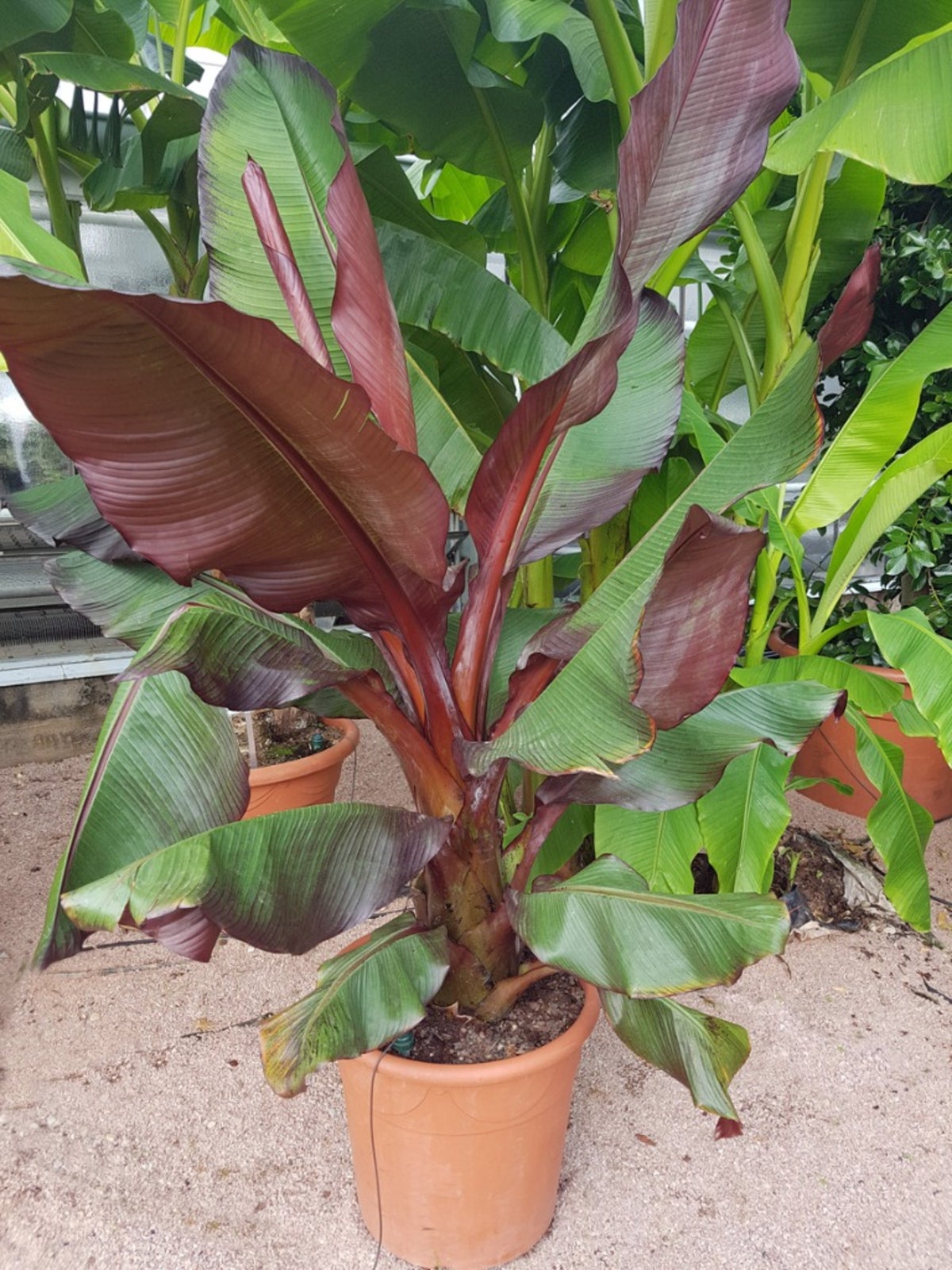Japanese Banana Plant – Caring For A Musa Basjoo Hardy Banana Variety


The Japanese banana plant lends that tropical island flair to gardens and landscapes as far north as USDA hardiness zone 5. Also known as the Musa Basjoo banana, these herbaceous perennials can withstand wintertime temperatures below -5 degrees (-20 F.) F and bounce back with new growth the following spring. If that sounds too good to be true, here's what you need to know about these hardy Japanese banana plants:
What are Japanese Hardy Banana Plants
This hardy banana variety is not actually a tree, as they are sometimes erroneously called. Like other members of the Musaceae family, the trunk-like pseudostem of the Japanese banana plant is made up of tightly rolled leaves and is not woody.
The showy, green leaves unfurl from the center of the plant with each successive leaf emerging larger than the previous one. It's not uncommon for leaves of the Japanese banana plant to reach 6 feet (1.8 m.) in length. These fast-growing plants can attain a seasonal height of 10 to 12 feet (3-3.7 m.) before cold weather kills off aboveground growth.
In northern climates, Basjoo banana care basics must be followed to ensure the rhizomatous roots survive the winter. This includes removing the dead leaf canopy, cutting the pseudostem 1 to 2 feet (.6 m.) above the ground, and mulching around the base.
Due to the shorter growing season, this hardy banana variety rarely blooms north of zone 9. Grown primarily as an ornamental, the Japanese banana pairs well with other tropical plants. Use Musa Basjoo in patio and pool settings among hibiscus, plumeria, passion flowers or canna lilies.
In USDA zones 9-10, the Basjoo Japanese banana plant remains an evergreen year-round. It takes Musa Basjoo banana plants 12 to 24 months to bloom and set fruit. Gardeners will most likely need to hand-pollinate the flowers in order to produce bananas. The golden-yellow fruit of this hardy banana variety are only 1 to 3 inches (2.5-7.6 cm.) long and contain numerous seeds.
Musa Basjoo Banana Care
Choose a sunny location with rich, fertile soil for your Musa Basjoo banana plant. These heavy feeders thrive on monthly applications of fertilizer and a moist soil substrate. Before planting, work in plenty of organic compost to a depth of 8 to 12 inches (20-30 cm.).
Sign up for the Gardening Know How newsletter today and receive a free copy of our e-book "How to Grow Delicious Tomatoes".
Banana plants develop an extensive root system to withstand hurricane force storms. To avoid foliage loss during windy weather, hardy Japanese banana leaves have adapted a cross-section method of tearing. This can leave the plant looking straggly. Locating banana plants in sheltered areas or pruning damaged foliage helps maintain their showy appearance.

Laura Miller has been gardening all her life. Holding a degree in Biology, Nutrition, and Agriculture, Laura's area of expertise is vegetables, herbs, and all things edible. She lives in Ohio.